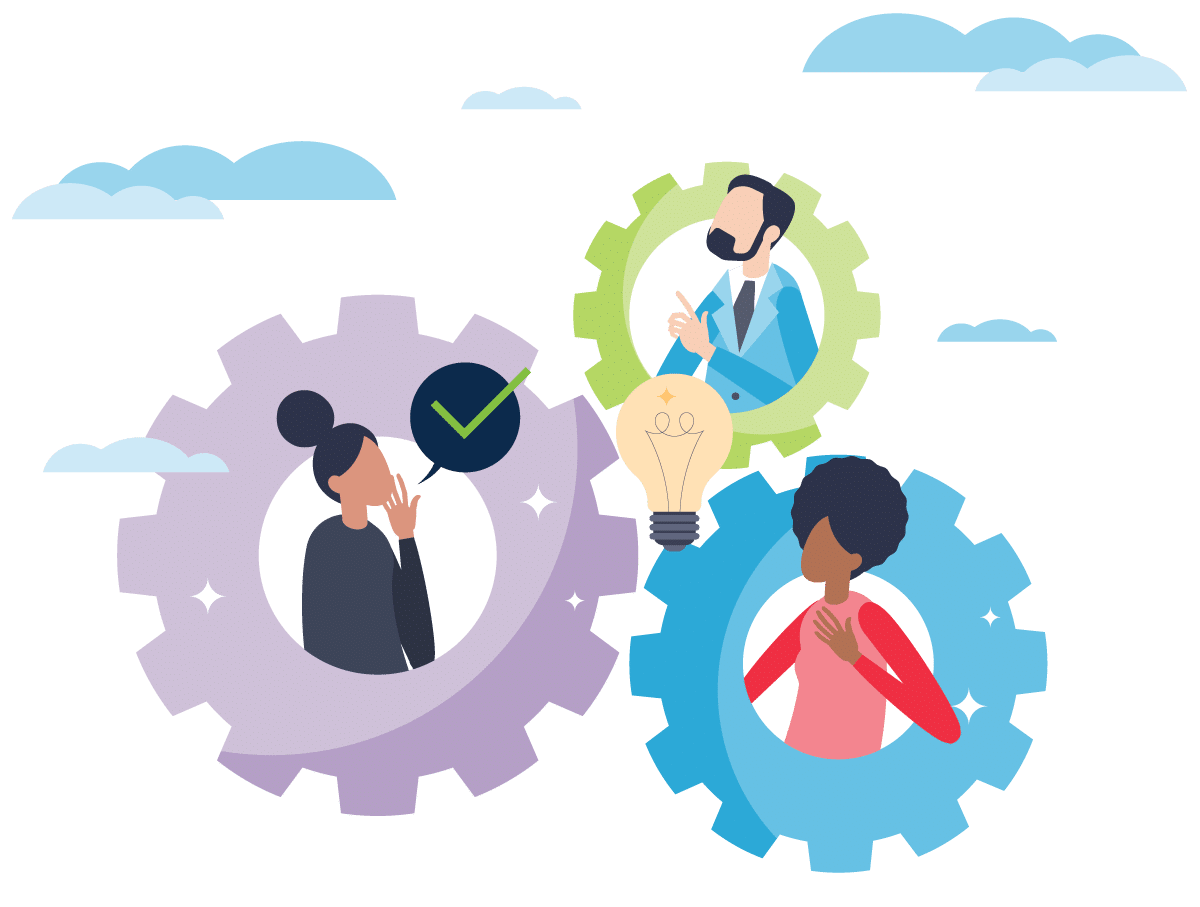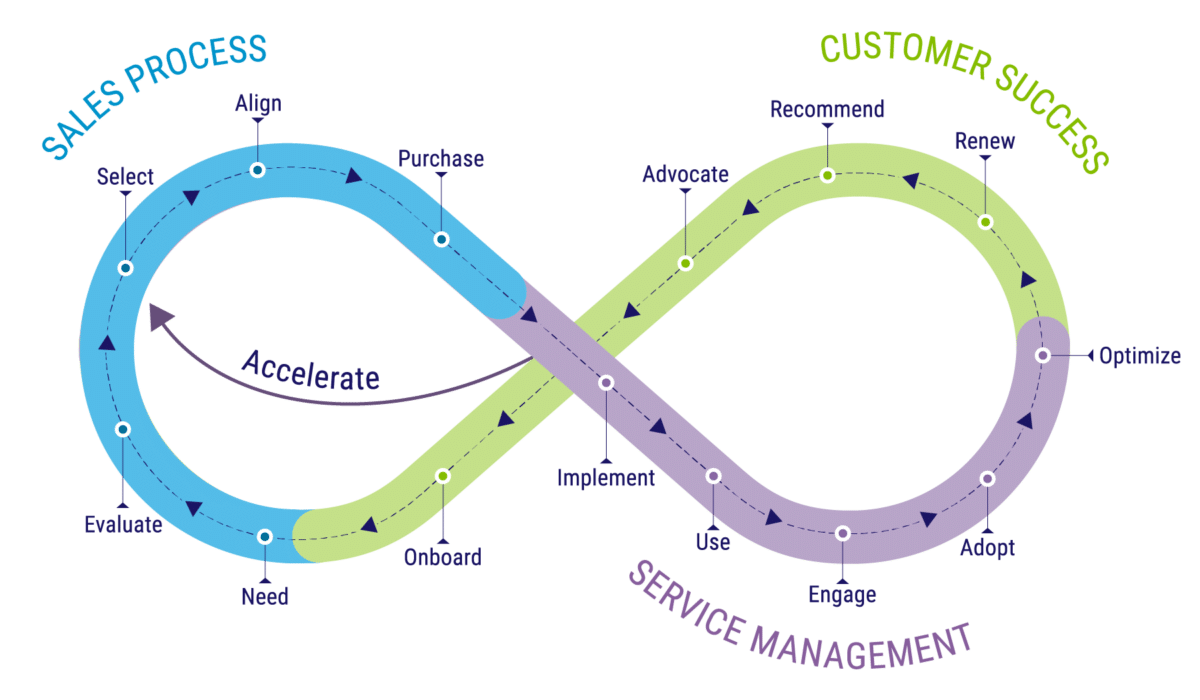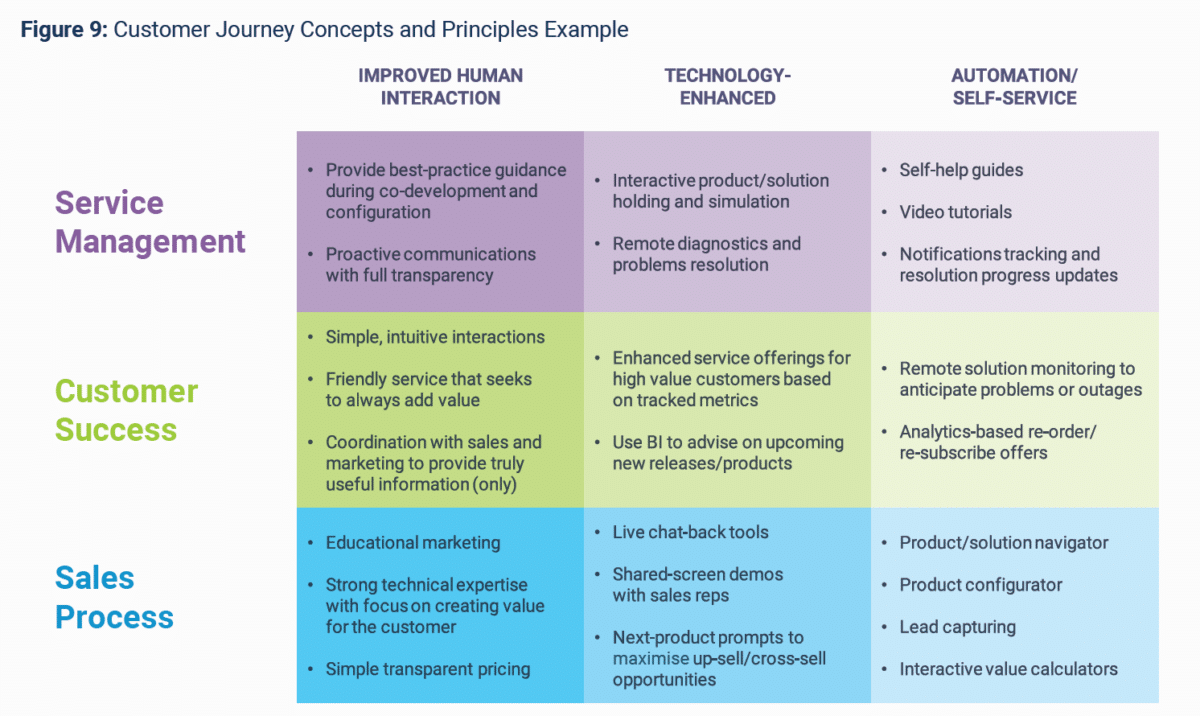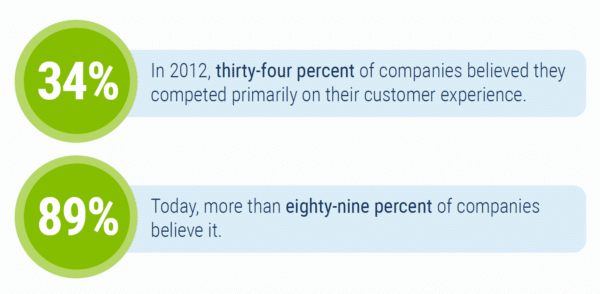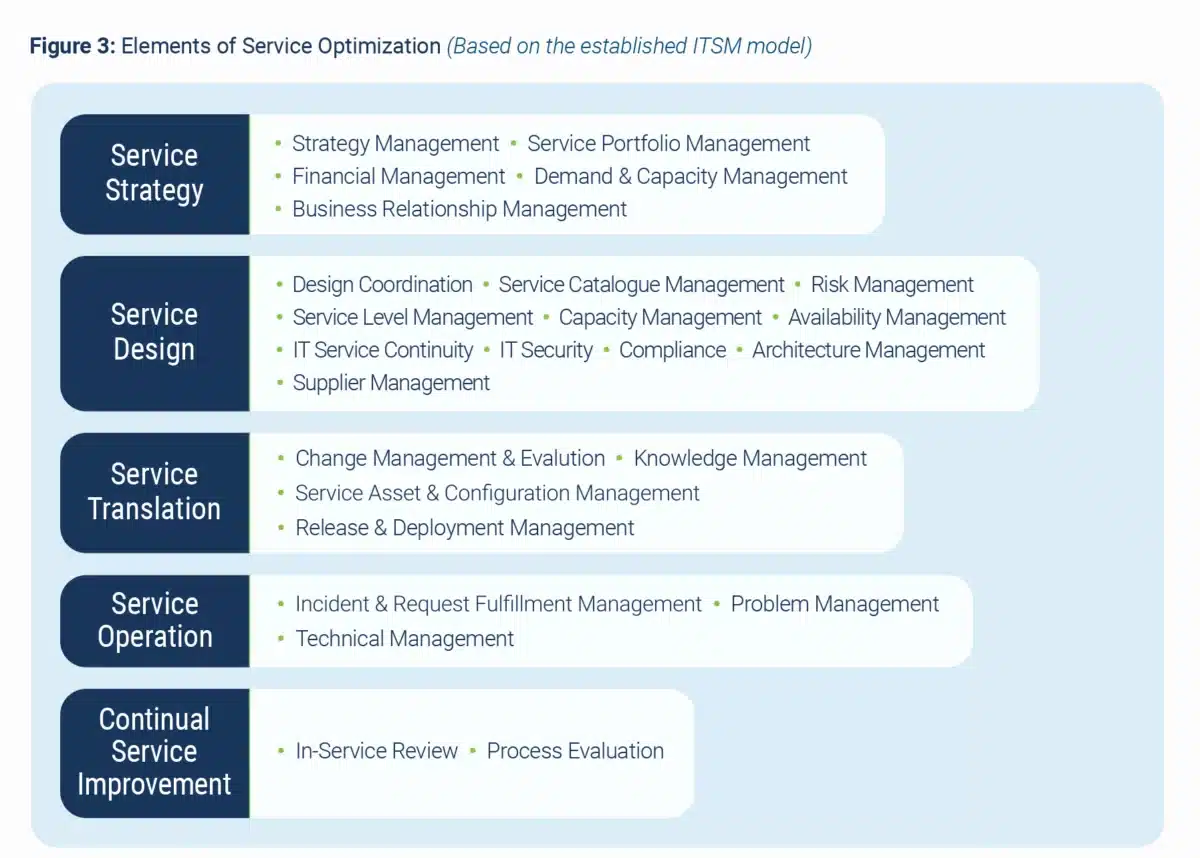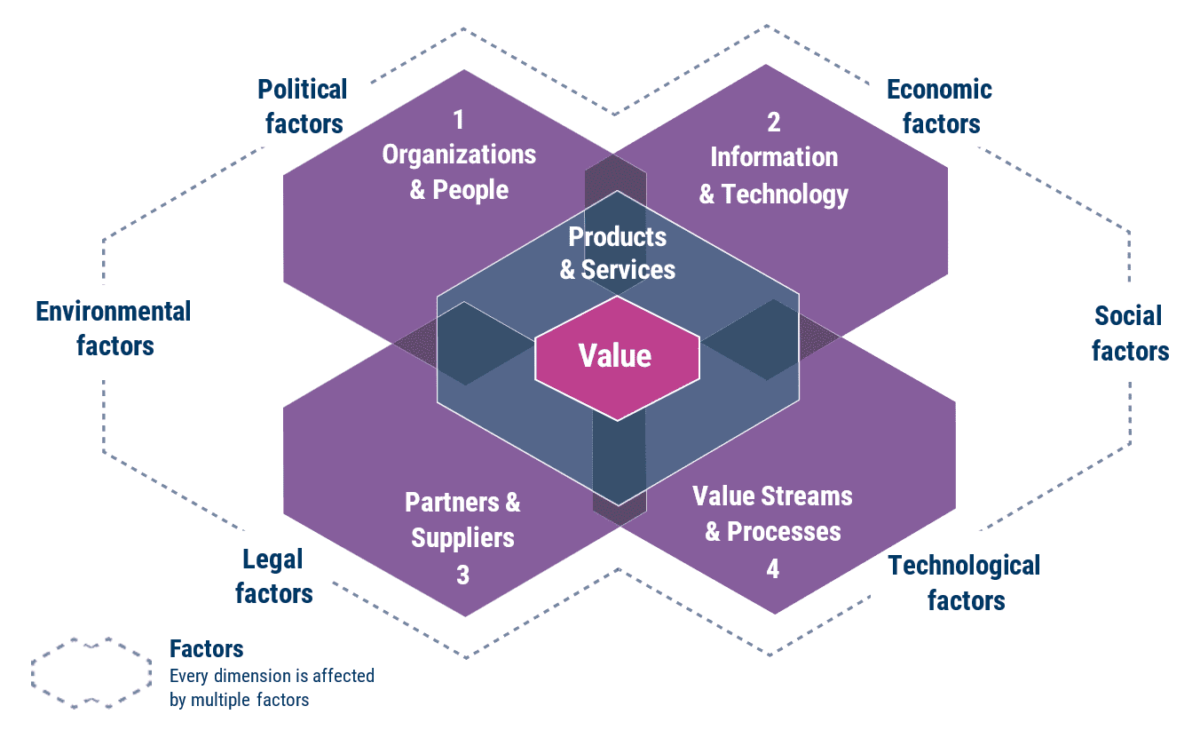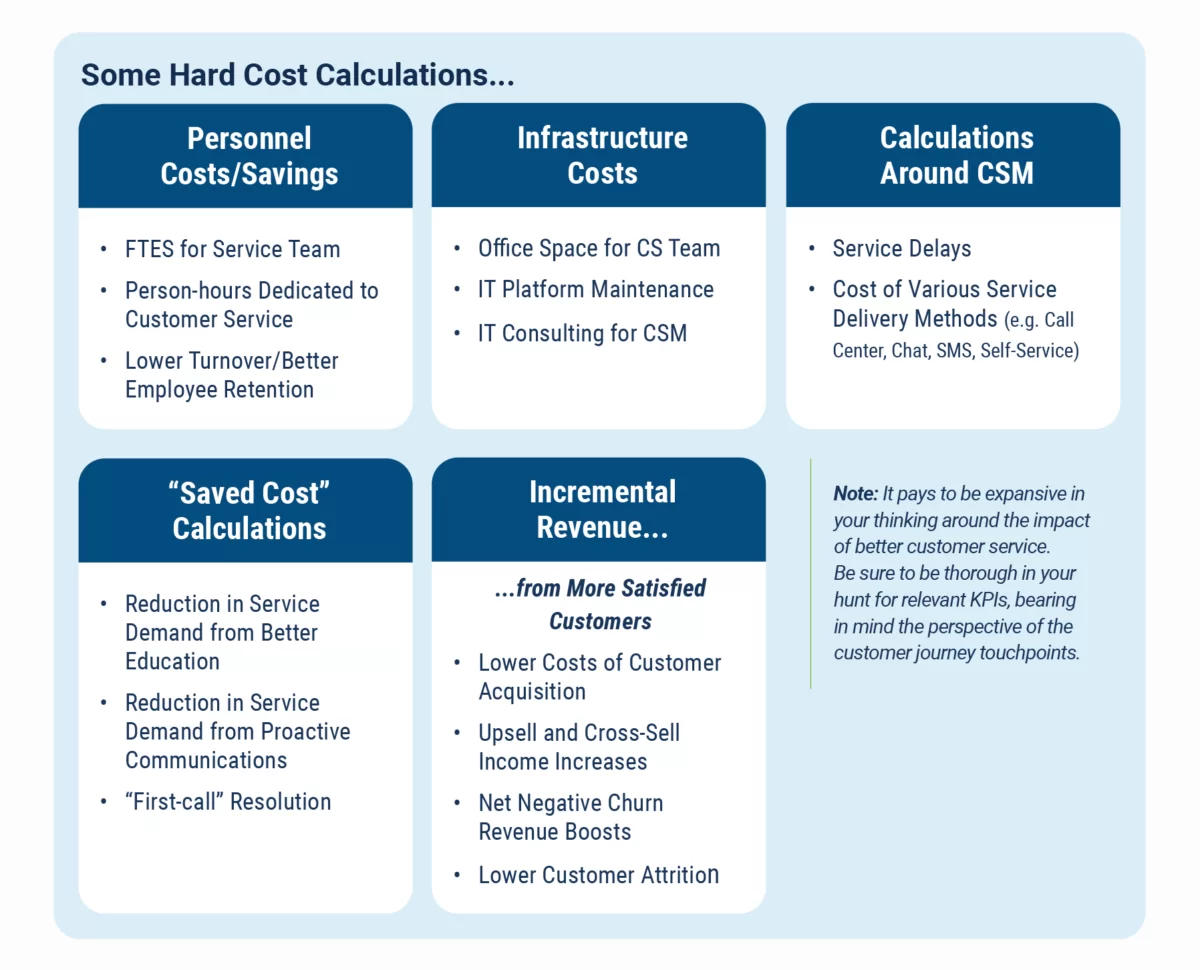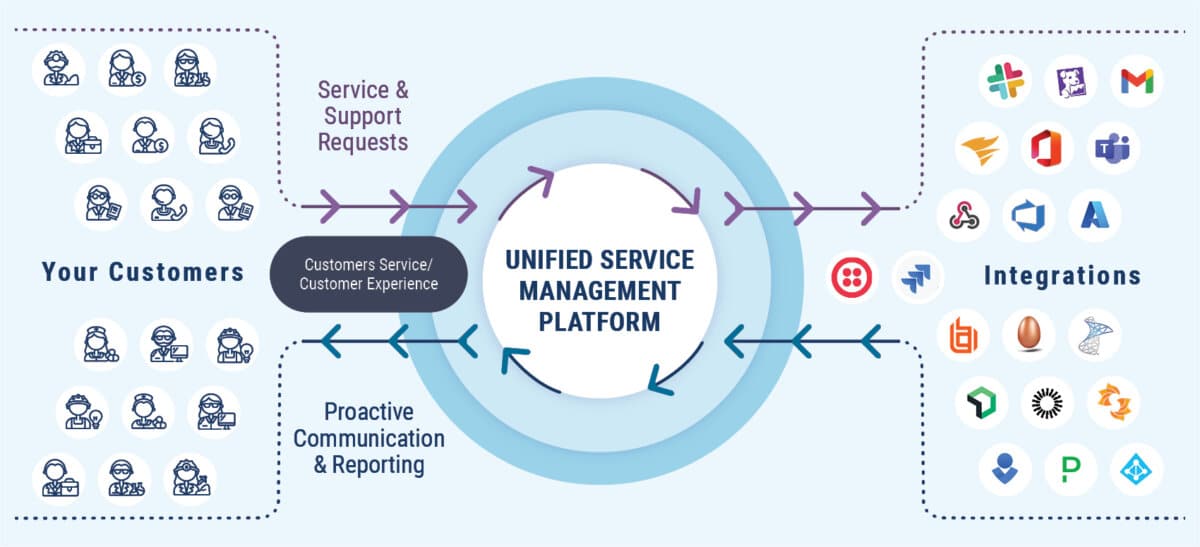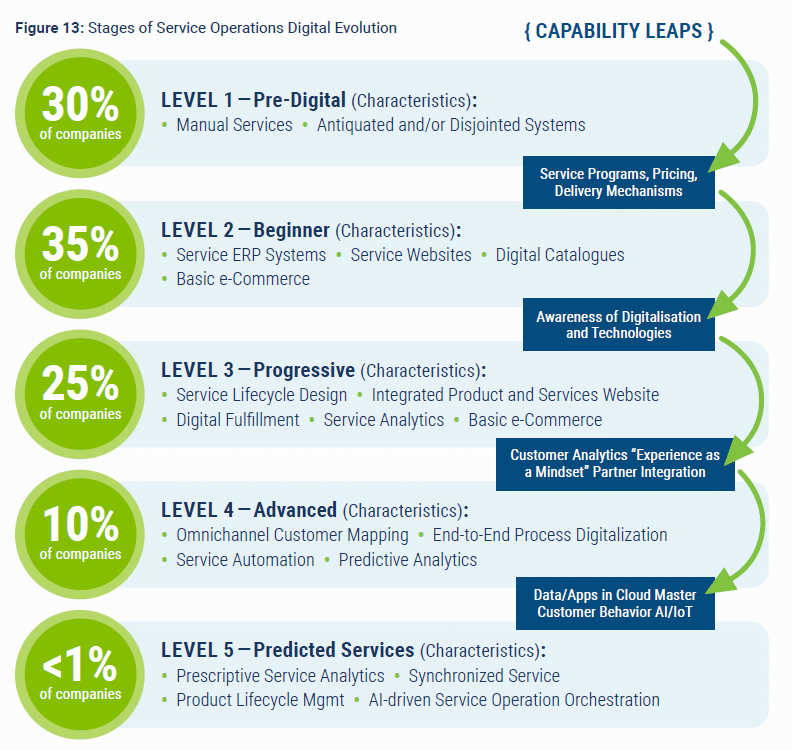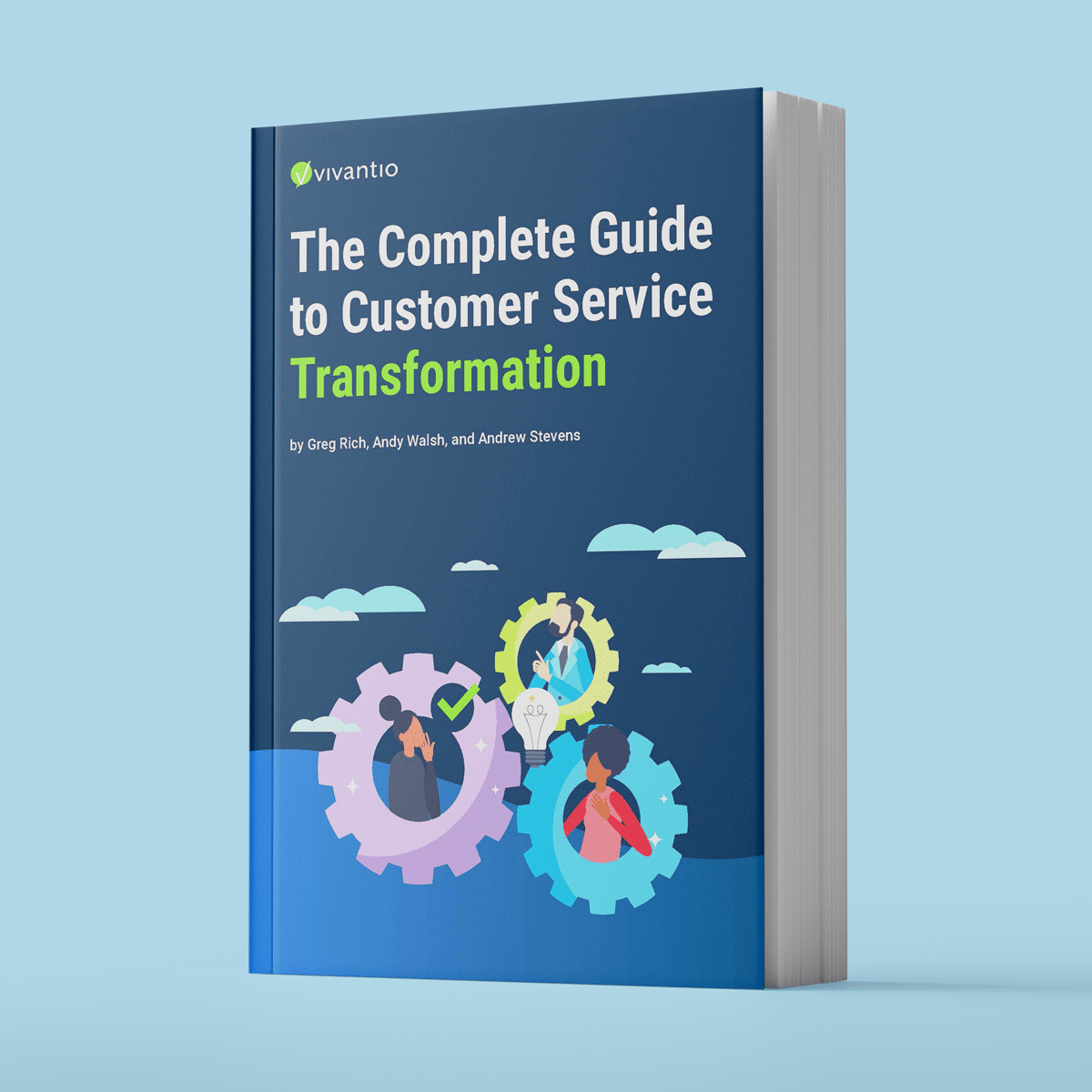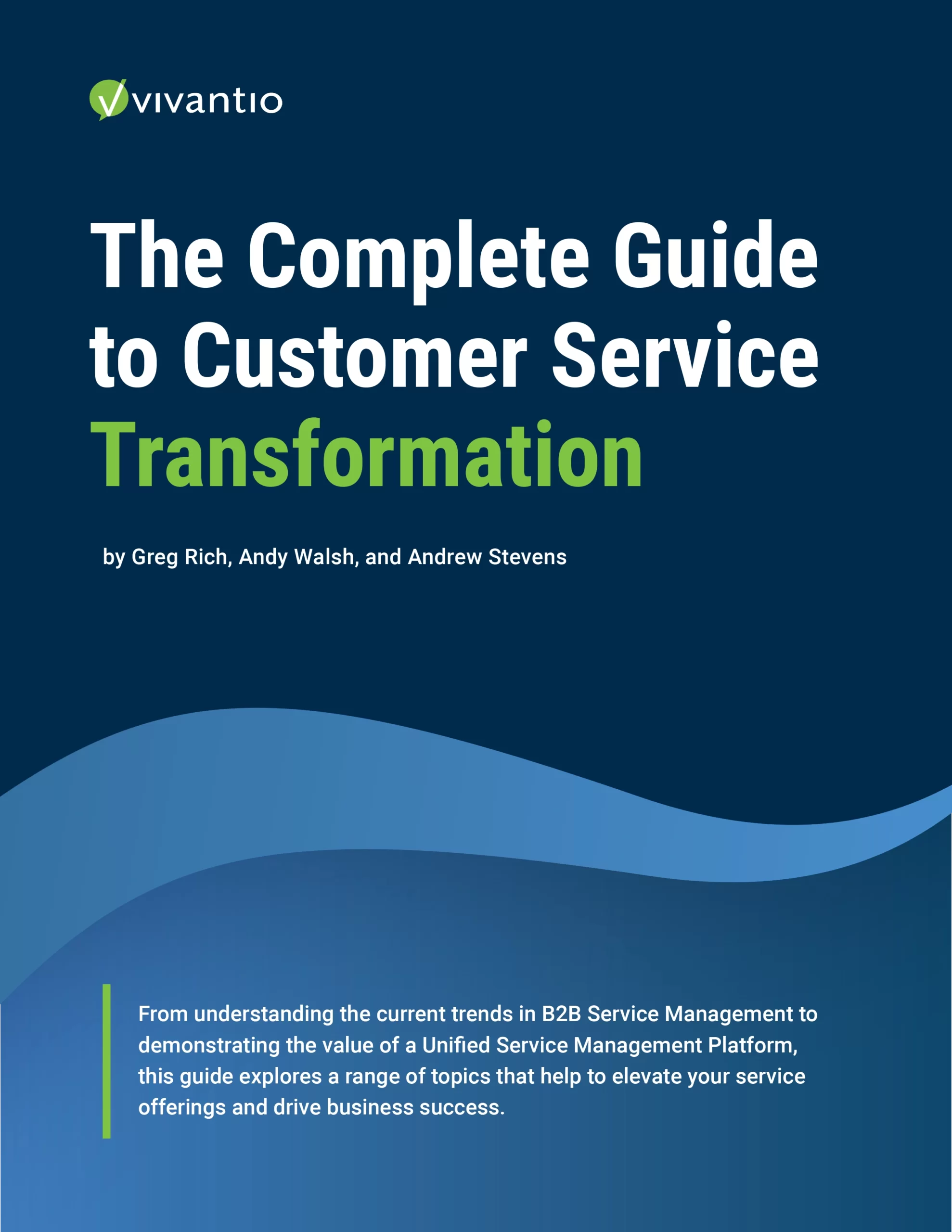Introduction
Leveraging breakthrough service to transform your B2B enterprise has become essential — with measurable benefits across all aspects of your business.
Achieving real success will demand a next-generation service infrastructure, including a gathering of all relevant data into a “unified service management platform” that gives your customer service (CS) and customer experience (CX) teams real-time insight—and the power to deliver new levels of customer satisfaction.
Whether you choose to read from beginning to end or skim through to what interests you the most – we aim to provide valuable insights into how a superior service strategy, combined with the right tools and a customer-centric mindset, can become a catalyst for transformative change in your organization.
Embracing B2B Service Optimization
Analysts from McKinsey to Gartner to the editors of Harvard Business Review have documented bottom-line benefits from an improved customer experience. Most companies (>89%) believe they need to achieve better service. Analysts continue to help them quantify the stakes in terms of KPIs like the ease of selling to a customer vs. a cold prospect (14x easier) and the measurable value of customer satisfaction (140% increased spending vs. non-satisfied customers)
Other measurable benefits include:
- Reducing the cost of delivering a service
- Reducing the resources required to deliver a service
- Shortening the time required to deliver a service
- Improving risk management and regulatory compliance
- Supporting better contracts, including SLAs and T&Cs
- Improving IT and operational availability/uptime
- Improving security incident handling
- Increasing satisfaction of customers using a service, by:
- Reducing number of issues with a service
- Empowering customers via automated fulfillment
- Supporting customers in getting the most out of a service
If you don’t deliver optimized customer service — someone else will!
Failure to achieve gains in service optimization (CS/CX) can threaten a business’s very survival across multiple KPIs:
- Cost overruns in delivering customer service
- Delays/extended waiting times for customers seeking service
- Customer attrition due to poor service experiences or lack of communication
- Greater business disruptions around disasters/outages, security issues, or regulatory lapses/penalties
B2B companies are often held to a higher standard across the board, as those high-value customers recognize their financial importance to you. Historically, service improvements in everything from telecommunications (the first mobile phones) to logistics (overnight document delivery) were spearheaded in B2B applications.
Designing a service optimization model
Whether you’re pursuing a “rip-and-replace” service optimization initiative, or simply exploring ways to evolve your current structure, it will be helpful to understand some proven foundational concepts. The elements of an optimized service organization are comprised of five key areas (Fig. 3) that serve to define a consistent, agile, and evolving process for maximizing customer satisfaction and driving loyal relationships.
Leveraging proven approaches and frameworks
In the IT realm, there has been significant work undertaken to systematically identify and analyze best practices for service provision. Based on work by efficiency guru W. Edwards Deming, the ITIL (IT Infrastructure Library) was developed by the UK Government’s Central Computer and Telecommunications Agency (CCTA) nearly 40 years ago.
“A bad system will beat a good person every time.”
– W. Edwards Deming
In 2019, the latest iteration, ITIL V4, formally and deliberately expanded in focus beyond IT to help facilitate the implementation and adoption of Agile principles across all types of service organizations.
As shown below, the ideal ITSM platform will be conceived in the full context of the business world (PESTLE) and will consider the four dimensions of a typical enterprise: Information and Technology, Value Streams and Processes, Partners and Suppliers, Organizations and People.
How to measure the value of service optimization
In businesses where customer churn plays a significant factor, B2B companies are measuring significant gains by prioritizing service over sales, with the goal of achieving a phenomenon known as “Net Negative Churn.”
Fixing “the leaky bucket”
Stemming the costly tide of customer churn is a natural and valuable result of optimizing your CS/CX performance—and these new systems create a virtuous circle of continually improving results.
The venture capitalist and business author Tomasz Tunguz published an analysis of how a SaaS provider achieving a 5% negative net churn rate increased their average customer’s monthly recurring revenue (MRR) increased by 73%.
Beyond touchpoints: Understanding the full customer journey.
When conducting cost/benefit analyses for customer service optimization, be sure to use a Customer Journey lens, as opposed to individual customer touchpoints, to track the real costs and values all along the value chain.
The idea is to encourage managers to look at how customers experience your brand. The Customer Journey Map can be depicted as a diagram (or several diagrams) that outline the stages customers go through —e.g., from buying products online to accessing customer service on the phone to airing grievances on social media, etc.
“It’s also critical to note that customer preferences aren’t static; they will continue to evolve, sometimes in surprising ways, based on the channels at their disposal, demographic shifts, and other factors (such as the influence of digital leaders in raising customer expectations).”
– McKinsey & Co.
What to measure: Finding KPIs across the customer journey
Tying metrics like customer satisfaction to as many upstream influences as you can, will enable you to see areas for improvement and investment—as well as tracing back the causes of underperforming KPIs.
The following table outlines some suggested areas to locate KPIs:
How service optimization can transform customer journeys
One of the first dynamics that many organizations note is an improvement in their sales processes. Often, this can be directly traced to the beneficial effect of having a truly satisfied customer base. (Fig D.)
Results from this advantage can include a shortened sales cycle and increased performance—not only in up-sell or cross-sell situations, but in net-new business as well, using satisfied customers as an initial engagement point.
Increasing customer retention by just 5% can increase profits from 25-95%, depending on the industry according to Bain & Company and Harvard Business School.
Understanding the concepts and principles behind the Customer Journey can go a long way in helping you re-imagine current practices to find ways to streamline processes, break down silos, and increase transparency across the entire extended value chain:
Essential technology for optimizing service delivery
What do we mean when we suggest leveraging technology to improve customer satisfaction and CX?
In the old view, a Customer Relationship Management (CRM) system was used to house data about customers that could be tapped by sales and service organizations to support their efforts. Other systems—with varying degrees of connectivity and access—might house other customer data relating to things like credit terms, orders in-production, contracts, etc.
The value of a unified service management platform
Seamless and extended, whole-enterprise connectivity is a gigantic undertaking, but unifying all your enterprise’s data that relates to customers is already possible with the right customer service technology.
A unified service management platform that uses advanced APIs to connect disparate systems can help you achieve the full benefits of service optimization on a highly accelerated timetable.
Why B2B companies need a customer-centric IT strategy
Top consultants are pointing out how companies such as Amazon, Apple, and Uber “continuously reinvent themselves by delivering simple, immediate, and individualized experiences.” Today, these consultants suggest that “even traditional business-to-business players in sectors such as chemicals and steel [need to make] bold moves to build dynamic shared digital ecosystems around customer needs.”
Creating this “digital ecosystem” demands a transparent and holistic view that can begin with your customer service management platform.
The benefits of a unified service management platform
There are dozens of measurable benefits to supporting your CS/CX Teams with robust data and connectivity – here are the Top 8:
- Eliminating the need for service teams to shuttle among systems for customer insight
- Uniting system data from disparate line-of-business (LOB) software
- Leveraging a single source of data and reporting across multiple systems
- Proactively communicating with and servicing customers (vs. service recovery)
- Improved efficiencies (Achieving the same output with fewer resources)
- Empowering customers and supporting self-diagnosis / self-service
- Improving CS/CX team oversight and internal coordination/communication
- Leveraging business intelligence (BI) to uncover new efficiencies
To understand the deeper impact of bringing together all the customer-relevant data in your enterprise, download the full eBook, The Complete Guide to Customer Service Transformation.
Moving quickly toward improved customer self-service
There’s no time to waste in advancing your self-service capabilities, as business-to-business customers are already demanding a better experience. In a survey of 1,000 B2B decision makers, lack of speed in interactions with their suppliers emerged as the number one pain point, mentioned twice as often as price.
Digital solutions loom large in executives’ thinking to make routine tasks more efficient. Some 86 percent of respondents said they prefer using self-service tools for reordering, rather than talking to a sales representative.
What is self-service in a B2B context?
Self-service allows your customers to independently interact with your company—at times and places of their choosing. That means putting everything a customer might want to find at their fingertips. It means providing seamless access to content, support, scheduling and purchasing through your website or a customer portal.
As we’ve seen, the desire for immediacy is strong and growing among B2B customers. If your company fails to offer the opportunity for prospects to instantly complete a transaction online immediately after making a product or service decision, you’re not meeting that need.
Beyond sales, other critical self-service interactions can include activities such as:
- paying bills and invoices
- making changes to orders
- requesting and scheduling maintenance
- managing deliveries and tracking shipping
Does self-service mean letting go of agents and customer service reps?
No. Embracing self-service doesn’t mean giving up on current, agent-centered models. In short, it’s not “either/or,” it’s “both/and” when it comes to optimal service delivery.
For B2B companies who may be overspending in their service delivery, it may be a matter of moving from an agent-first strategy to a digital-first strategy—and measuring the impact on cost and service. It’s clear that the smart combining of digital and non-digital tactics—and a holistic, cross-functional view of the enterprise—will be the drivers of competitive advantage.
How fast is self-service being adopted by other companies?
Currently, there’s a wide spectrum of adoption of customer service optimization powered by today’s best technology. This spectrum ranges from “pre-digital” organizations—all the way up to advanced CX practitioners who are leveraging the power of AI to anticipate the needs of their customers and head-off potential problems long before their customers become aware of them.
Achieving organizational alignment around customer service optimization
Changing the way you approach customer service, self-service, and the implementation of a unified service management platform is a serious task and should be positioned as a “marathon” and not a “sprint.”
Getting buy-in from both senior leadership and the teams that will be charged with implementing these critical changes will be key to your success.
“If there’s one thing that’s certain about the future, it’s that change is here to stay. The ability to constantly transform has become a top priority for organizations. Therefore, change management is now an essential business priority that can’t be overlooked or set aside. Leaders need to urgently develop change and project management competencies across all levels of an organization, from employees and managers to senior executives.”
– Harvard Business Review (2023)
If you are a Senior Leader seeking to drive change…
Your primary role is to motivate your CS/CX teams to make the required adjustments to their technology and processes. Quickly articulate your vision for the future state of your organization. Emphasize that the new capabilities are of make-or-break significance for your company’s survival.
Stress that this initiative has the attention of your C-suite and board, that the organization is counting on them, and that the required support for change will be there.
Discuss the KPIs you understand to be tied to Customer Service and share current-state baselines as available. For KPIs that aren’t currently tracked, outline a method and timetable for discovering them.
Set an agile cadence for work periods, dependencies, and check-ins with the appropriate teams.
If you are in a Customer Support role…
Find a sympathetic Senior Executive (or two) and begin to discuss how enhanced Customer Service capabilities have been demonstrated to impact critical business outcomes such as renewals/repeat business, customer retention, upsell/cross-sell wins, etc.
Try to discover what top management’s priorities are for the coming year or quarter and begin to discuss with colleagues and managers how you think your organization could contribute to advancing those goals.
Frame discussions around those make-or-break business outcomes that are driven by customer satisfaction. Get people to appreciate the role you’re playing in the organization’s very survival.
If you manage a smaller team, consider volunteering to serve as a pilot program or “skunk works” case and allow your successes to drive a wider adoption.
Why flexibility in your service management platform is critical
For B2B companies, it is critical to be able to segment the allocation of your firm’s time and attention to your most valuable customers. B2B Customer Journeys often grow complex because they must accommodate the special needs of small percentages of the client base.
From a technology and process perspective, segmenting Customer Journeys into standard and specialty tracks can minimize complexity for most clients, resulting in easier journeys for clients and significantly lower costs. Additionally, customers can realize economies of scale as multiple large complex relationships are facilitated in similar ways to many smaller relationships.
Evaluating CS/CX technology partners
A few key questions to ask in selecting a platform—and a partner—to help you optimize your customer service may include:
How much will you be able to accomplish in-house?
Don’t leave yourself at the mercy of consultants. The more capabilities that exist “out of the box” the better. Look for solutions that allow your team to configure processes, rather than solutions that require extensive custom coding. Solutions that empower your administrators to make decisions and changes save costs and delays of third-party reliance.
How quickly can you adapt the solution?
To evolving customer or business needs? Here too, solutions that require custom coding every time you make a change to your system may be cumbersome. What happens as your customer base evolves…or as systems outside of Customer Service change? Look for solutions that allow for simple interface adjustments vs. prolonged customizations.
Does your solution allow you to work?
Independent of other teams’ solutions, supporting the necessary autonomy to evolve? Look for relevant integration capabilities that are easy to understand and develop so that you’ll have maximum flexibility in creating a more rounded solution. (Be careful! Many current technology solutions fall short here.)
In Closing
The role of service optimization has taken center stage. It’s no longer just about meeting customer expectations, but about surpassing them and delivering unforgettable customer experiences. B2B companies can no longer afford to ignore the fundamental shifts in customer service practices. This calls for a robust, unified service management platform that efficiently bridges the gap between customer service teams and customers, fueled by real-time insights, and a customer-centric mindset.
“Although customer-experience improvement is typically associated with B2C players, it is at least as critical in the B2B setting. While the nature of B2B relationships makes the reform challenge more difficult, with regard to customer and journey complexity, the competitive advantages and significant bottom-line gains that flow from it make the effort worthwhile.”
– McKinsey and Co.
Transforming your business and reaching unprecedented levels of customer satisfaction doesn’t happen overnight, but with the right strategies, frameworks, and tools in place, it’s an achievable reality. From embracing proven ITIL best practices, to mapping and understanding the entire customer journey, and leveraging advanced technology for optimized service delivery—each step brings you closer to a transformative change.
Some of the measurable benefits of service optimization include:
- cost reductions
- improved risk management
- increased customer satisfaction
- and ultimately, a boost in profits.
Embracing self-service, not as a replacement of your customer service agents, but as a complement to them, is about giving your customers the power to interact with your company on their terms, providing them with immediate, personalized, and efficient service.
The opportunity for improvement is boundless and the time to optimize is now. In the world of B2B Customer Service Transformation, superior customer service isn’t just a competitive edge—it’s the catalyst for transformative change in your organization.
As a senior leader or a customer support role holder, understand that your influence is instrumental in driving this change. You are called upon to motivate, inspire, and lead by example. Gaining buy-in from all levels of the organization is crucial to the success of these transformative changes.
Together, let’s elevate your approach to customer service excellence.
Inspire change and share the informational wealth!
